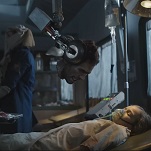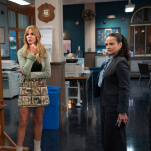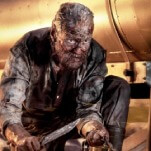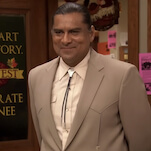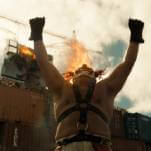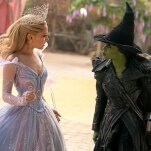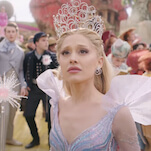Not coming soon: 16 movies released after long stays on the shelf

1. Case 39 (completed 2006; released 2010)
If a film sits on a shelf long enough, there’s a chance that a member of its cast will rocket to stardom during its lengthy post-filming, pre-release slumber and—theoretically at least—make it a more commercial proposition. That’s exactly what happened with Case 39. The Renée Zellweger-led fright flick was filmed in Vancouver in 2006, but wasn’t released in the United States until late 2010. By that point, co-star Bradley Cooper had made the leap from playing smarmy-handsome-asshole supporting roles in terrible movies to playing smarmy-handsome-asshole starring roles in generally less-terrible movies, and the film had played surprisingly well in Spain and Mexico. But that didn’t make much of a difference in the U.S., and the confused supernatural thriller died at the box office during the dog days of winter.
2. Prozac Nation (completed 2001; released 2005)
Noted Elizabeth Wurtzel superfan Elizabeth Wurtzel helped define a generation with Prozac Nation, her zeitgeist-friendly 1994 memoir of depression and self-absorption. The book quickly became a pop-culture phenomenon and made its author a wildly divisive literary figure, so a film adaptation was inevitable. Alas, audiences waited and waited and waited for the film, completed in 2001, to finally receive a richly merited direct-to-cable dumping in 2005. It’s easy to see why the whiny, insufferable self-pity-fest skipped the big screen, especially after Wurtzel first made insensitive comments about 9/11 (which she referred to as being like “a strange art project”) and then came out against the film version of her debut, which she told The New York Times was “horrible.” If only everyone involved in long-shelved films shared her candor.
3. Slapstick (completed 1982; released 1984)
Steven Paul’s ill-fated adaptation of Kurt Vonnegut’s achingly sad novel Slapstick should never have been made. Then it never should have been released. But after two years on a shelf, Paul’s surreally misconceived quasi-satire about a pair of super-intelligent Siamese twins from outer space (played by Madeline Kahn and Jerry Lewis) was finally released with a new score and the delusional belief that audiences in 1984 might be a little kinder to the film than audiences would have been two years earlier. They weren’t.
4. Fanboys (completed 2006; released 2009)
Inherently dated by a premise that involves people actually getting excited for another Star Wars project, Kyle Newman’s Fanboys grew even staler thanks to a torturous pre-production process that kept it mired in development for nearly two years. An endorsement from George Lucas and cameos from Carrie Fisher and Billy Dee Williams (among others) put fan anticipation for the film into hyperdrive, but the Weinstein Company balked at the central plot of Ernie Cline and Adam Goldberg’s script, which finds a group of former high-school buddies breaking into Skywalker Ranch so their friend can see The Phantom Menace before he dies of cancer. Fearing it would turn off audiences, the Weinsteins hired Little Nicky director Steven Brill to cut out that whole depressing, motivation-creating cancer thing and transform Fanboys into a broad, raunchy comedy. The Internet rebelled with the “Stop Darth Weinstein” campaign, incensed at the idea of anyone changing what they’d convinced themselves was a lighthearted yet touching and relatable story about the depths of fandom—or so they’d heard. Ultimately, that epic off-screen saga proved more interesting than what they got, which, even with the cancer, was a broad, raunchy road-trip comedy with some Star Wars references thrown in. In many ways, like The Phantom Menace itself, Fanboys was better off as just an idea.
5. All The Boys Love Mandy Lane (completed 2006; released worldwide in 2008 and 2009, still unreleased in North America)
The teen slasher movie All The Boys Love Mandy Lane premièred in the Midnight Madness section of the Toronto Film Festival, as good a platform for a horror film as any in the world (akin to throwing a giant slab of raw meat to a pack of a thousand hungry wolves). It was a fine showcase for its pretty young star, Amber Heard, and Jonathan Levine, an ambitious director who went on to make The Wackness. The Weinstein Company picked it up under Bob Weinstein’s genre label Dimension, which handled the Scream trilogy, among other high-profile titles, and the film seemed destined to nab a couple weekends’ worth of teen dollars before retiring to home video. Now it’s 2011 and the film has burned through American release date after release date. Where creative issues have dogged many of the other films on this list, All The Boys Love Mandy Lane has been victimized more by the vagaries of business. Dimension lost a fortune on Grindhouse, which forced the company to sell the film to Senator Entertainment, which then also tanked, leaving the film in permanent limbo. The good news? Should it ever get released, a movie about horny teens killing each other will never be dated.
